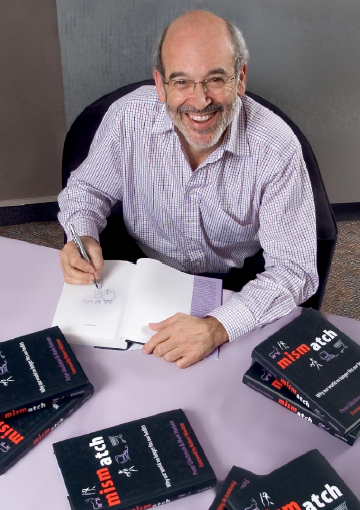Copenhagen cue for catchment as climate action showcase

Working Wonders in Copenhagen: By basing policy on the sound science advice of Professor Sir Peter Gluckman, Aotearoa has signed up 20 countries in Copenhagen to a global research alliance on agricultural emissions. photograph Liggins Institute
Climate action is set to become the only game in town.
Which could leave the Mahurangi starved of funds for reducing its elevated sediment accumulation rate. But rather than compete with climate action projects, the Mahurangi is perfectly positioned to be a climate action showcase.
This is the strategy of the Professor Sir Peter Gluckman –inspired global research alliance on agricultural emissions that 21 countries have signed up to in Copenhagen, last night. From being cast as a climate culprit, the country is now firmly repositioned to be a climate action showcase—the first meeting of the alliance will be held in March, in Aotearoa.
Following Kyoto, farmers made much mileage and mischief by disingenuously labelling the proposal to fund agriculture emissions research a fart tax. No matter that ruminants burp rather than fart methane, it made for an irresistible romp, right up the steps of parliament. Kyoto, of course, was a lame duck—it was hamstrung by the likes of idiot world leader Bush, and coal-burner extraordinaire, China.
Copenhagen is something else, as spectacularly demonstrated by last night’s announcement. Aotearoa’s unlikely climate change hero, John Key, has softly and intelligently navigated past the various polarising forces that beset the best efforts to date, to chart a less suicidal course for life on this over-heating planet. The Mahurangi can adopt a comparable strategy. Rather than rattle the begging bowl to fund fiendishly expensive riparian fencing and planting, the Mahurangi can play to its strengths, and do something for the region, for Aotearoa and for the planet. A first move could be to quickly redefine the objects and rules in the district plan that permit subdivision in return for planting the land in indigenous species. The current key object of the rule, to increase biodiversity, is seriously out of date—it has been since 2004, when the science revealing the harbour’s elevated sediment accumulation rate was published. A rule that would work for the Mahurangi would list these objects:
- Sequester carbon dioxide
- Conserve soil
- Increase biodiversity
- Increase productivity
Sequestration of carbon dioxide is not maximised by covenanting land in no-take private forest reserves. Silviculture increases the productivity of the land, resulting in more carbon being captured. And it stays sequested, provided that the timber is used predominantly for the production of long-lasting objects such as high quality buildings, furniture and boats.
The biodiversity improvement comes from a greater area of pasture being converted to a variety of indigenous forestry species, along with the attendant indigenous fauna. Permanent protection of riparian margins and wetlands, within the reforested areas, would likely exceed the areas currently be covenanted under the subdivision rule. Quite simply, potential Mahurangi property holders will willingly pay for the change in land use. Developers, meantime, would have a clear set of rules and guidelines, which if respected would provide a high degree of certainty in obtaining resource consent. The Rotorua Lakes A Zone rules provide a largely applicable blueprint—designed to protect Rotorua Lakes landscape values and reduce lake nitrogen enrichment. The refreshing approach seeks to spend a minimum on compliance administration and a maximum on high quality indigenous forest establishment.
As well as tweaks to the district plan, a structure plan would be required. This is in order to avoid, amongst other things, the sorts of ad hoc infrastructure that results where each developer can only devise solutions within current survey boundaries—boundaries, in many instances, determined before the invention of the motorcar, much less the electric car. The results can be seen on the outskirts of Warkworth where a multiplicity of private roads involving obscene amounts of cement decending at precipitous grades from the ridge roads that date, ironically, from the days when communities actually planned their roading networks.
In addition to action on methane, an announcement on forestry from Copenhagen is imminent. It will reflect the fact that growing trees sustainably to produce long-lasting products is the perfect ploy for pulling carbon dioxide from the atmosphere—Kyoto currently considers, absurdly, that all a tree’s carbon is released to the atmosphere the instant it is felled.
Mahurangi’s proximity to the metropolis means that its much admired harbourscape is irresistible to residential development. This menace must be parlayed into protection and enhancement of the Mahurangi.
A landscape of outstanding natural beauty and a climate action showcase.
